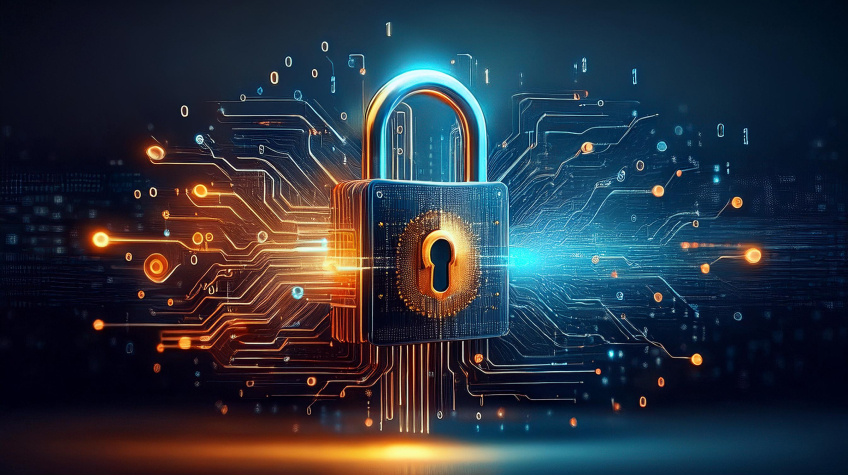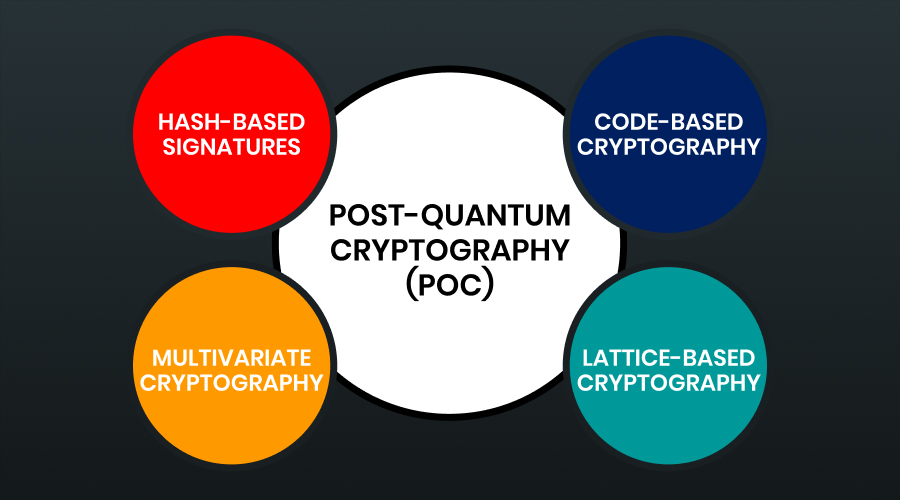
Post Quantum Cryptography is in the mainstream in this era, and for all good reasons. It is specifically designed to protect sensitive data and communications from future attacks by quantum computers. It is one of the most crucial components for future-proofing cybersecurity strategies against emerging quantum computing threats. Without PQC, quantum computing presents a risk of data theft for governments, organisations, and individuals. The traditional encrypted methods are easy to break for the super-powered quantum computers.
Hence, the implementation of PQC is vital to secure the entire system from malicious actors. So, if you are wondering what PQC is and how it works, then continue reading this post. Here, we have shared everything about Post-Quantum Cryptography, including how it works. Take a look…
What is Post Quantum Cryptography (PQC)?
Post-quantum cryptography is the process of advancing cryptographic algorithms to ensure data security and privacy. PQC envisions a future where malicious individuals exploit the weaknesses of quantum computers to break existing encryptions. Though quantum computers are in the development stage, the threat of ethical and security challenges is constantly rising. This is because of their capability to break current encryption methods based on public-key encryption systems. Though it is difficult to crack the algorithms of public-key infrastructure, the brute force of quantum computing can hack them in minutes.
PQC, often referred to as quantum encryption, involves the creation of advanced cryptographic algorithms designed to mitigate the threat posed by quantum attacks. It promotes the responsible use of quantum technology so that global data and security are not compromised. This way, it promotes the innovative and thoughtful use of quantum technology to drive economic growth, solve complex challenges, and enhance security.
Recently, NIST (National Institute of Standards and Technology) finalized the standard security protocols for PQC. These protocols have been designed to withstand major security risks launched by quantum computers. They ensure a safe digital environment for various activities, including digital transactions, online shopping, sending confidential email messages, storing customers’ sensitive information, etc.
Organizations can easily implement these post-quantum cryptography protocols to secure their post-quantum future. This way, quantum computers can streamline complex problems, ensuring no disruption to society. However, the NIST is constantly working on bringing more PQC security protocols to keep data safe.
How Does Post Quantum Cryptography Work?
In upcoming years, quantum computers using Shor’s algorithms will make conventional cryptographic algorithms such as RSA, DSA, DH, and EDCH insecure. Therefore, academics, public sector organizations, and technology institutes have collaborated to discover new quantum-safe cryptographic algorithms. They aim to create more powerful algorithms which seem technically difficult but not impossible.
There are two main types of encryptions, namely:
- Symmetric
- Asymmetric
- Symmetric encryption (secret key or private key) uses identical digital keys to encrypt and decrypt data. For instance, if someone sends an email to his friend, the receiver will decrypt the email with the same key with which you encrypted it.
- Asymmetric encryption (public key cryptography) uses public and private keys to encrypt and decrypt data. Some common examples of asymmetric algorithms include elliptic curve cryptography, RSA, etc.
However, sometimes developers use these two approaches to secure the system. For instance, asymmetric cryptography is used to validate the website, and the symmetric key is used to secure shared communications.
Quantum computers use the principles of quantum physics to solve hard mathematical computations and breach data security. Hence, quantum-safe algorithms should be developed and implemented to prevent hackers from accessing applications ranging from online transactions to military systems, academics, autonomous vehicles, and sensitive communications. Otherwise, it will be difficult to imagine a safe digital environment once the quantum computers are launched.
PQC methods can be used with symmetric and asymmetric cryptographic algorithms to withstand bad actors’ attacks. Lattice-based cryptography has grabbed everyone’s attention because it is based on a geometric approach that makes it difficult for quantum computers and conventional computers to break encrypted data. This factor makes it a good candidate for post-quantum cryptographic algorithms.
➜ Crypto Agility
The new cryptographic system should be adaptive to new requirements such as crypto agility to withstand attacks launched by quantum computers. Crypto agility is a significant post-quantum cryptography solution. Applications, communications, end-user devices, and hardware modules should use the updated secure and agile protocols to safeguard the system. According to recent reports, Google has already started implementing this approach for its PQC New Hope.
NIST (National Institute of Standards and Technology) chose the CRYSTAL-Kyber algorithms for general algorithms to access safe and secure websites. For digital signatures, NIST selected three algorithms based on structured lattices. One of them uses a hash function.
➜ HODOS-PQC
Besides this, the NIST has developed a quantum-resistant software known as HODOS-PQC to protect the world from quantum computers’ malicious attacks. It will replace RCA algorithms with robust quantum-safe algorithms. It will be based on much harder lattice-based algorithms than prime factorization and elliptic-curve cryptography. The best part is that it is affordable, scalable, flexible and robust software.
Let’s now understand the purpose of PQC. Here we go…
Purpose of Post-Quantum Cryptography

Understanding the purpose of Post Quantum Cryptography is crucial. Read this section to understand the purpose of PQC in detail. Read on!
➜ Develop Secure Cryptographic Systems
Without a doubt, existing encrypting methods rely on difficult factorization and challenging elliptic curve discrete algorithms to enhance security. However, supercharged quantum computing will solve these calculations in no time, ensuring no data safety and security. In such a scenario, post-quantum cryptography comes in handy. It focuses on updating cryptographic systems to make quantum-resistant mathematical calculations complex. This way, it ensures security against quantum and classical computers.
➜ Robust Public-Key Frameworks
Another purpose of PQC is to make the Public-key infrastructure (PKI) more advanced. PKI secures data transmission and communication using public and private keys. However, the trapdoor problems used by PKI algorithms like RSA and elliptic curve cryptography are quickly solved by the unconventional methods of modern quantum computing. The implementation of post-quantum cryptography before the launch of quantum computers will make the PKI algorithms more advanced.
➜ Ensures Digital Signatures Safety
Post-quantum cryptography ensures robust authentication schemes, including digital signature schemes, with the help of cryptographic hash functions, lattices, and multi-party computations. All in all, it plays a crucial role in the Domain Name System (DNS) or DNSEEC to protect applications from accepting forged signatures.
➜ Augments Encryption of Social Media Platforms
Another purpose is to augment the encryption of social media platforms. Earlier, Signal Technology was used to provide end-to-end encryption services to billions of users of Google, WhatsApp, and Signal messaging platforms. In October 2023, the company started to provide NIST-approved PQC algorithms to these platforms. The CRYSTALS- Kyber algorithms are considered the most effective in preventing cyberattacks launched by quantum computing.
➜ Equitable Access
The integration of NIST-approved PQC standards ensures the equal distribution of quantum computing in the global landscape. Organizations of all sizes will be able to accelerate their productivity in a safe quantum computing environment. Integrating NIST-approved PQC standards will allow organization to significantly prevent the risk of technical disparities.
Difference Between Quantum Cryptography and Post Quantum Cryptography
Now that you have understood the ins and outs of post-quantum cryptography let’s explore the differences between quantum cryptography and PQC.
| Particulars | Quantum Cryptography | Post Quantum Cryptography |
|---|---|---|
| Definition | Quantum cryptography refers to a mechanism that explains how to transform human-readable data into unbreakable secret codes. | Post-quantum cryptography refers to an advanced mechanism that eliminates vulnerabilities in software, preventing the risk of quantum computing attacks. |
| Purpose | Quantum cryptography ensures secure communications with the help of conventional encrypted methods. | Post-quantum computing makes hard mathematical computations more difficult to solve even for quantum computing. |
| Key concepts | Quantum key distribution (QKD)Quantum random number generation (QRNG) | Lattice-based cryptographyHash-based cryptographyCode-based cryptographyMultivariate cryptographyIsogeny-based cryptography |
| Main Emphasis | The main focus of quantum cryptography is on a secure key exchange with traditional algorithms | The post-quantum cryptography focuses on creating modern algorithms, ensuring no risk to the data security and integrity from the quantum computers |
| Implementation | It is difficult to implement quantum cryptography because it requires specialized hardware and infrastructure like optical fibre connections and photon emitters | The practical integration of post-quantum cryptography is easy because it does not necessitate the use of specialized quantum software, making it more feasible for global adoption |
| Compatibility | It is compatible with optical communications | It functions with all kinds of digital communications, including optical communications and RF wireless system |
| Security | Less secure | Foolproof security |
| Cost | Due to the need for specialized hardware, its cost remains high | It is relatively low in cost |
| Popularity | Its popularity is limited because of its functioning with line-of-sight nodes | It is widely acceptable because of its compatibility with a great range of mobile device communications |
| Digital signatures | The quantum principles are not effective in making digital signatures safe and secure | The post-quantum cryptography improves the efficiency and security of digital signature schemes. |
The Bottom Line
In a nutshell, post-quantum cryptography signifies an essential advancement in safeguarding digital communications from the looming dangers posed by quantum computing. It utilizes complicated mathematical problems that are resilient to quantum attacks to protect sensitive data and essential systems in a post-quantum environment.
With the growing emphasis from governments and organisations on transitioning to quantum-resistant algorithms, post-quantum cryptography is vital for establishing a secure and resilient digital infrastructure. Despite the challenges of standardization and implementation, continuous progress in this area is leading the world toward a quantum-secure future.
However, it is worth noting that the safe use of quantum computing depends on the NIST-approved post-quantum cryptography protocols. For the internet’s safe usage, the whole world needs to transform into a global community and integrate PQC. When everybody is looking forward to harnessing the power of quantum computers, the need to understand the significance of advanced cryptographic algorithms is essential. This way, quantum computing will benefit everyone in the future.






